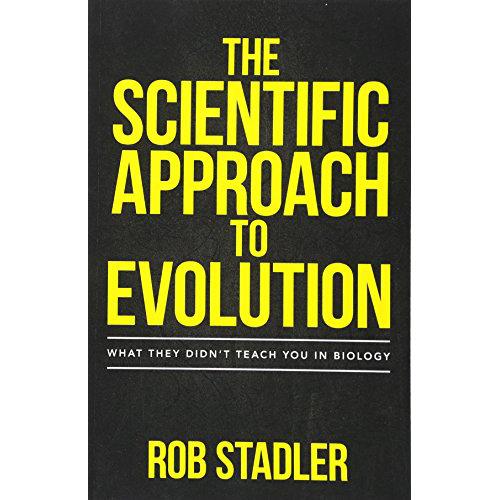The Scientific Approach to Evolution
Rob Stadler. 2016. CreateSpace Independent Publishing Platform. ISBN-13: 978-1532988097

Rob Stadler. 2016. CreateSpace Independent Publishing Platform. ISBN-13: 978-1532988097

“Evolution” is a word used with dramatically different meanings, often leading to confusion. This produces a serious obstacle for those who seek clarity in understanding the issues in evolution and creation. The book attempts to clarify the issues by identifying the most important ways in which the word is used and evaluating the strength of the evidence used in support of its respective meanings. This is a valuable approach that is highly recommended for anyone interested in the topic. The book has about 200 pages, including 157 in the main text, two appendices, a bibliography and an index.
The author, Rob Stadler, has a Ph.D. in medical engineering from the Harvard/MIT Division of Health Sciences and Technology. He has developed numerous patents on medical instrumentation and has published research on use of medical devices in studying the circulatory system. He is a member of the Logos Research Associates.
Stadler identifies four common meanings of the word, “evolution.” The “generalized” meaning is that species have changed over time periods greater than a single lifetime. The “grand” meaning is that all of life has evolved gradually from a common ancestor that lived a very long time ago. “Macroevolution” means evolutionary changes that produce new types of organisms. “Microevolution” means changes that modify existing organisms but do not produce new kinds of organisms. Speciation, production of new species, is included with microevolution because sister species may be no more different than members of a single species living in different places. The focus of the book is on the differences in supportive evidence for macroevolution and microevolution.
The central theme of the book is that the strength of a scientific claim can be evaluated by application of six criteria. The best science is: repeatable; based on direct measurements; based on experiments that are well-designed before the experiment is conducted; free of bias as much as possible; not dependent on unstated assumptions; and reported cautiously together with the limitations and applications of the conclusions. Research that meets these criteria is “high-confidence science.” Research that does not meet these criteria is “low-confidence science.” Stadler emphasizes that the difference between low-confidence science and high-confidence science is not due to the skill, intelligence or integrity of the scientists, but is due to the nature of the question addressed and the quality of the available data.
Nearly half the book applies the six criteria to evidence used in support of macroevolution or microevolution. The examples are well chosen and informative. The demonstration of how to distinguish poorly supported claims from well-supported conclusions in science is a valuable, much-needed contribution to the literature on science, creation, and evolution.
Stadler ends with three suggestions as to how the conflict between creation and evolution might be resolved. First, both sides should admit when they are making claims based on faith, not on science. Science cannot study the origin of life or of eukaryotes, and advocates base their claims on their personal beliefs, not on science. Second, both sides should recognize that they agree on microevolution and speciation. Evolutionists who criticize creationists for believing in fixity of species are showing they do not know what creationists actually believe. Third, if both sides would apply the six criteria for degree of confidence in science, they could both agree that the evidence for macroevolution is weak and should not be presented dogmatically. By following these steps, creationists and evolutionists might work together to advance our understanding of life.
Reviewed by
Jim Gibson, PhD